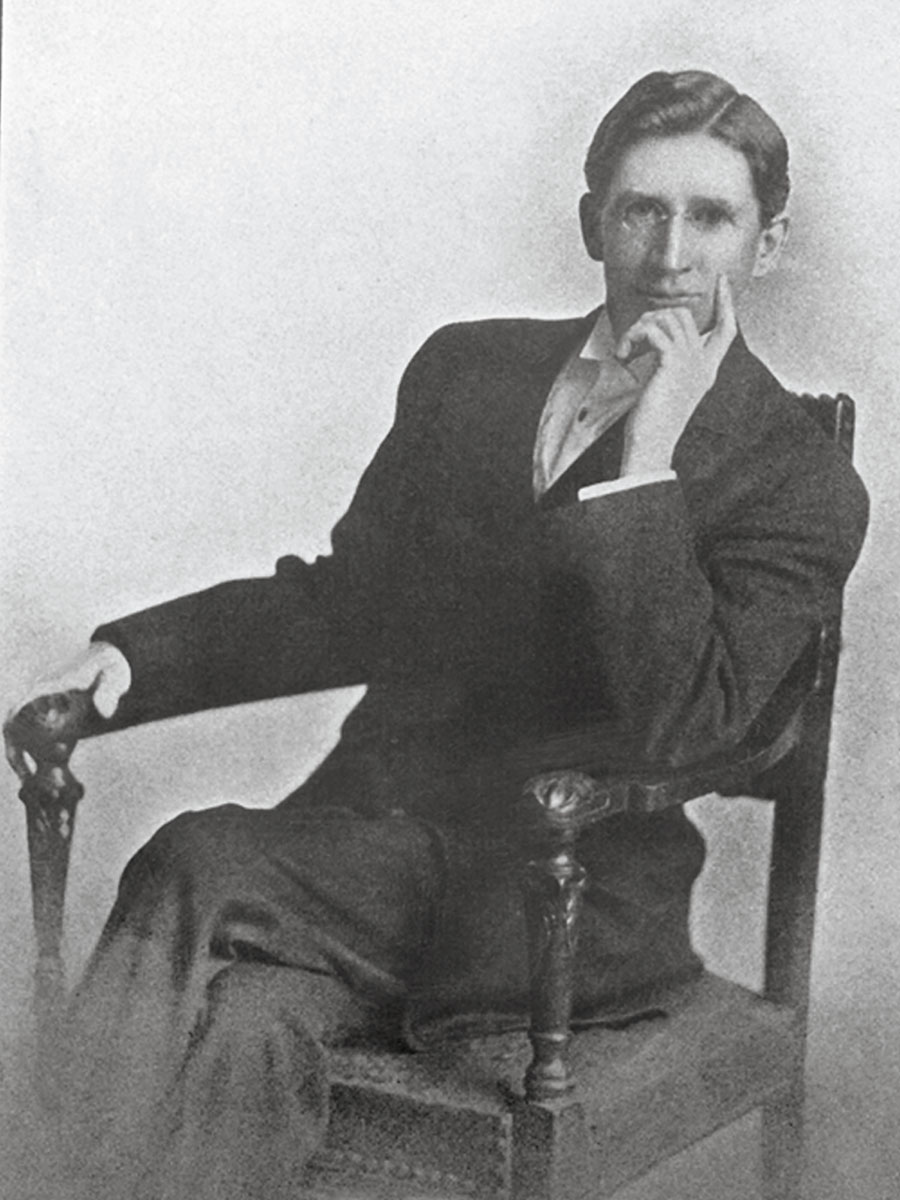Julian A. Burruss
Being the Change
A vision for education
Excerpts from Madison Century, a commemorative book by Martha Graham
Condensed from the article in Fall 2007 Madison
The 33-year-old Richmond native, a graduate of Virginia Polytechnic Institute, was head of the manual training programs in Richmond and a doctoral candidate at Columbia University.When Julian A. Burruss arrived in the sleepy little town of Harrisonburg in 1908, he envisioned an exceptional institution for higher learning. It was a bold vision, given that this first president of the Normal and Industrial School for Women at Harrisonburg was surveying empty farmland. This grand enterprise came with a charge issued by the General Assembly of Virginia to produce public school teachers and thereby serve all the people of the commonwealth.
In July President Burruss arrived in Harrisonburg with his bride of less than a year to begin building a school, literally from the ground up. Burruss proved to be a tireless and decisive president with the same enthusiasm for the school that its local backers held. …
Education beyond the books
Julian Burruss was a man who understood the times in which he lived. He also understood what the future would require. In Prospectus, a document he sent to potential students, he wrote, "Teaching is counted a profession, but the idea has too largely prevailed that it differs from other professions in that its qualifications are less and more easily acquired. … the general awakening of the public as to the importance of education on the part of those who would teach, and it may be said that in the not very distant future it will be impossible for any one to teach in the public school without adequate special preparation. …"
How right he was. At the turn of the century, teaching was a profession practiced haphazardly, yet Burruss knew teaching was too important to remain so. In crafting the curriculum, he considered the whole student and the impact a teacher would have.
Burruss also understood that education went beyond books. As a practical man, he expected students to be trained in both scholarly and practical manners. "Without depreciating the limitless stores of useful information bound up in printed volumes," he wrote in Prospectus, "it must also draw from the outside world, the home, the farm, the workshop, the office and the marts of trade." His broad perspective on learning would become a hallmark for the new school and a philosophy that would remain with the school throughout its first century.
A campus, students, curriculum, faculty and staff
In less than 14 months, the president, working in lockstep with an enthusiastic board, planned a campus from the ground up to accommodate 1,000 students, devised courses of study, hired a faculty and staff of 17, increased the size of the campus from the original 42 acres to 48 acres (with the purchase of an estate bordering the Newman farm), interviewed and admitted 150 students, and contracted and built two major buildings, which, 100 years later, still anchor the Quad.
On Sept. 27, 1909, President Julian Burruss opened the doors for the first student of the State Normal and Industrial School for Women at Harrisonburg. Three days later, on Thursday, Sept. 30, classes began.
Click here to subscribe to Madison.
